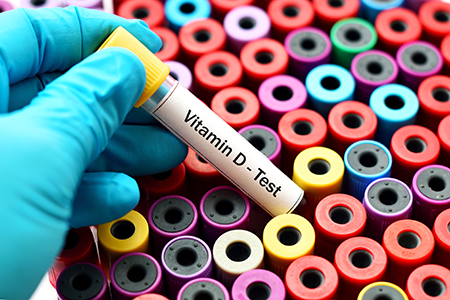What You Need to Know About Vitamin D

Don’t you just loathe these dark winter days? Winter can be tough here in Pennsylvania, from slushy snow to frigid days, with darkness in between. Unfortunately, we have another reason to have the winter blues- Vitamin D deficiency.
Wondering how the winter could affect the level of vitamin D in your body? Read more below to learn all about this vital relationship.
Vitamin D: Surprising Health Benefits
Vitamin D is a nutrient that your body needs in order to stay healthy. Vitamin D is sometimes called the “sunshine vitamin” because your body uses sunlight to make it. With direct sunlight, your body is able to synthesize this vital nutrient. In fact, around 90% of the vitamin D in your body is made from sunlight¹!
However, light received through the windows, while driving, or during a tanning session doesn’t increase the level of vitamin D in your body. Because many people get less direct sunlight during the winter, vitamin D levels can fall below normal during this time of the year.
The Roles of Vitamin D
Vitamin D has a number of roles in the body. It can²:
-
Promote calcium absorption
-
Promote bone growth and remodeling
-
Reduce inflammation
Because vitamin D is involved in multiple body processes, like the modulation of cell growth and immune function, it is being studied for its potential protective effects against cancer, autoimmune diseases, cardiovascular conditions, and other chronic conditions³.

Vitamin D Deficiency: Causes and Symptoms
Sometimes low levels of vitamin D cause no symptoms. When symptoms appear, they might include:
- Low back pain
- Muscle weakness
- Muscle aches
- Bone pain
Without adequate levels of vitamin D, bones can become thin, misshapen, or brittle. Because this “sunshine vitamin” is so important for bone health, persistent low levels of this nutrient can result in:
- hypocalcemic tetany
- osteoporosis
- rickets in children
- osteomalacia in adults
How Much Vitamin D Do You Need?
So, how can you raise the level of vitamin D in your body? Easy!
-
Improve your diet. Most adults require 600 IU/d of vitamin D each day³. Dietary sources include egg yolks, cheese, fish like mackerel and salmon, cod liver oil, and beef liver. Some food items- like orange juice, milk, yogurt, and cereal- are fortified to contain vitamin D.
-
Get lots of sunshine! One of the easiest ways to get vitamin D is to make it yourself! Because UV-B rays are the only ones that the body can use, light from tanning will not stimulate the production of vitamin D. So get out there and get some sun!

How to Test Your Vitamin D Levels
Still worried that you may not be getting enough vitamin D? There is an easy solution! Discuss vitamin D deficiency with your healthcare provider.
A single blood test can measure the levels of vitamin D in your body. Under a doctor’s medical supervision, inadequate levels can be treated easily with high supplemental doses of vitamin D. Get tested today!
REFERENCES
¹Bordelon, P., Ghetu, M. V., & Langan, R. C. (2009). Recognition and management of vitamin D deficiency. American family physician, 80(8), 841–846.
²National Institutes of Health. (2022, August 12). Vitamin D fact Sheet for health professionals. https://ods.od.nih.gov/factsheets/VitaminD-HealthProfessional/ .
³Vanchinathan, V., & Lim, H. W. (2012). A dermatologist's perspective on vitamin D. Mayo Clinic proceedings, 87(4), 372–380. https://doi.org/10.1016/j.mayocp.2011.12.010